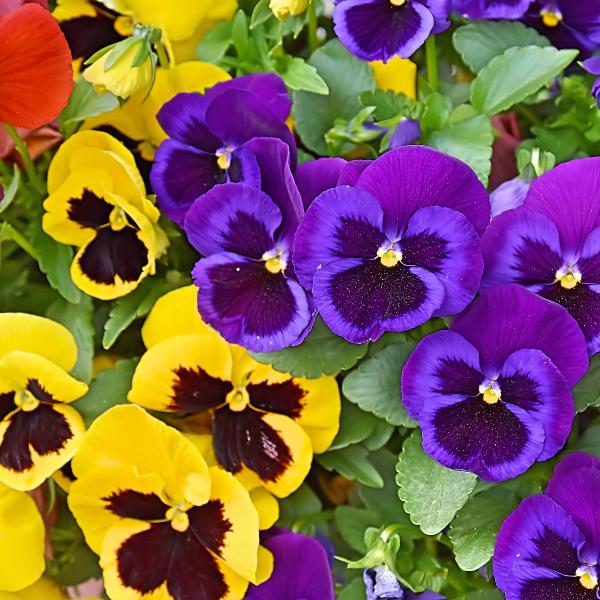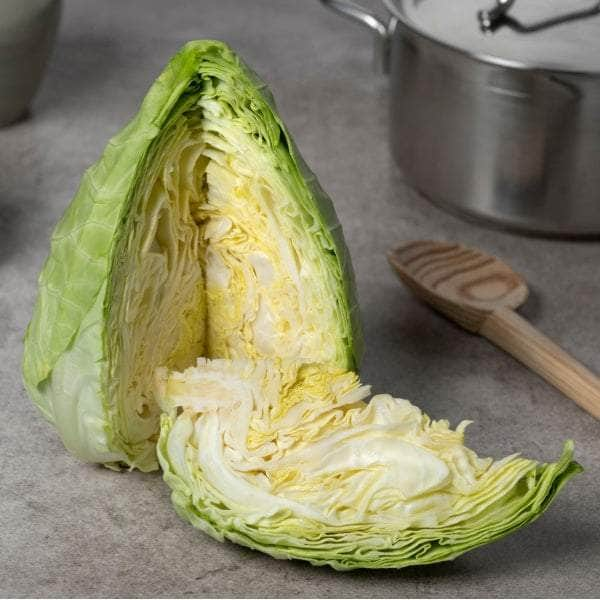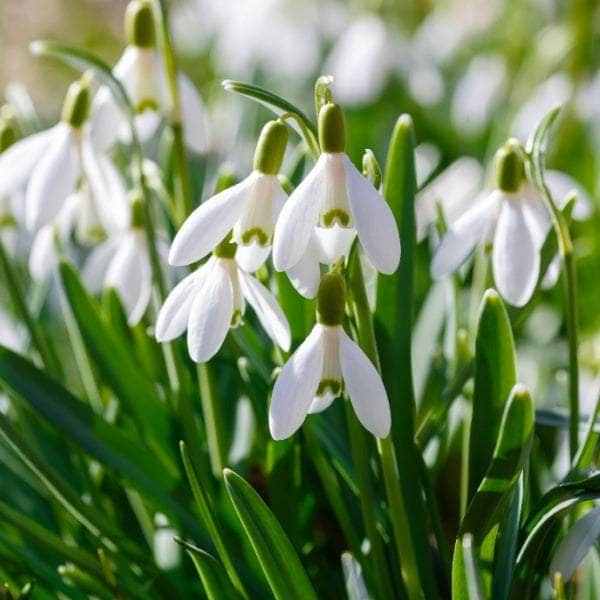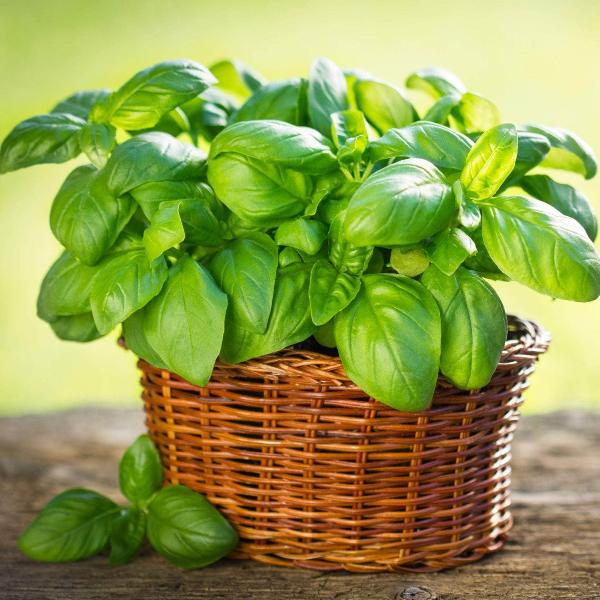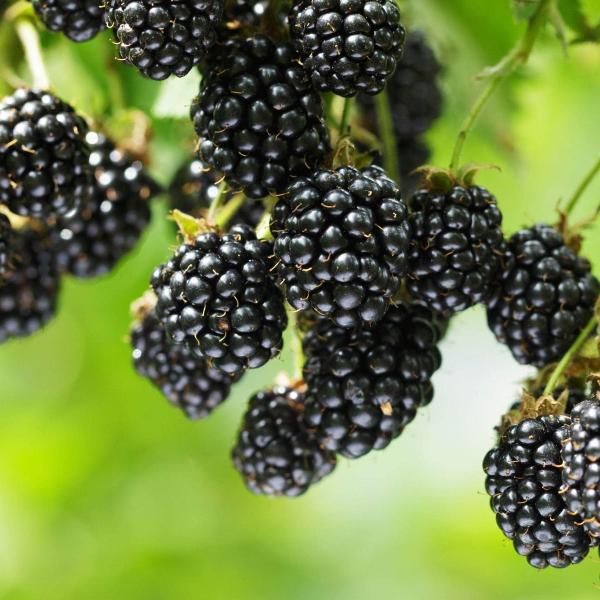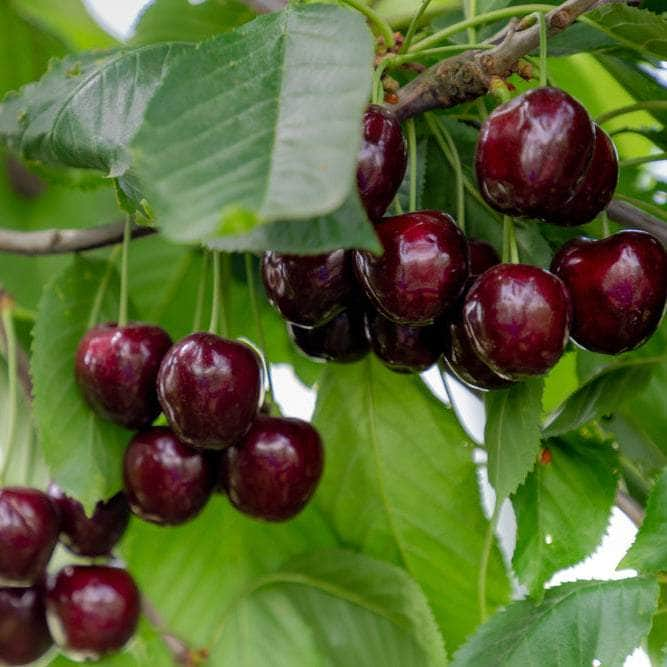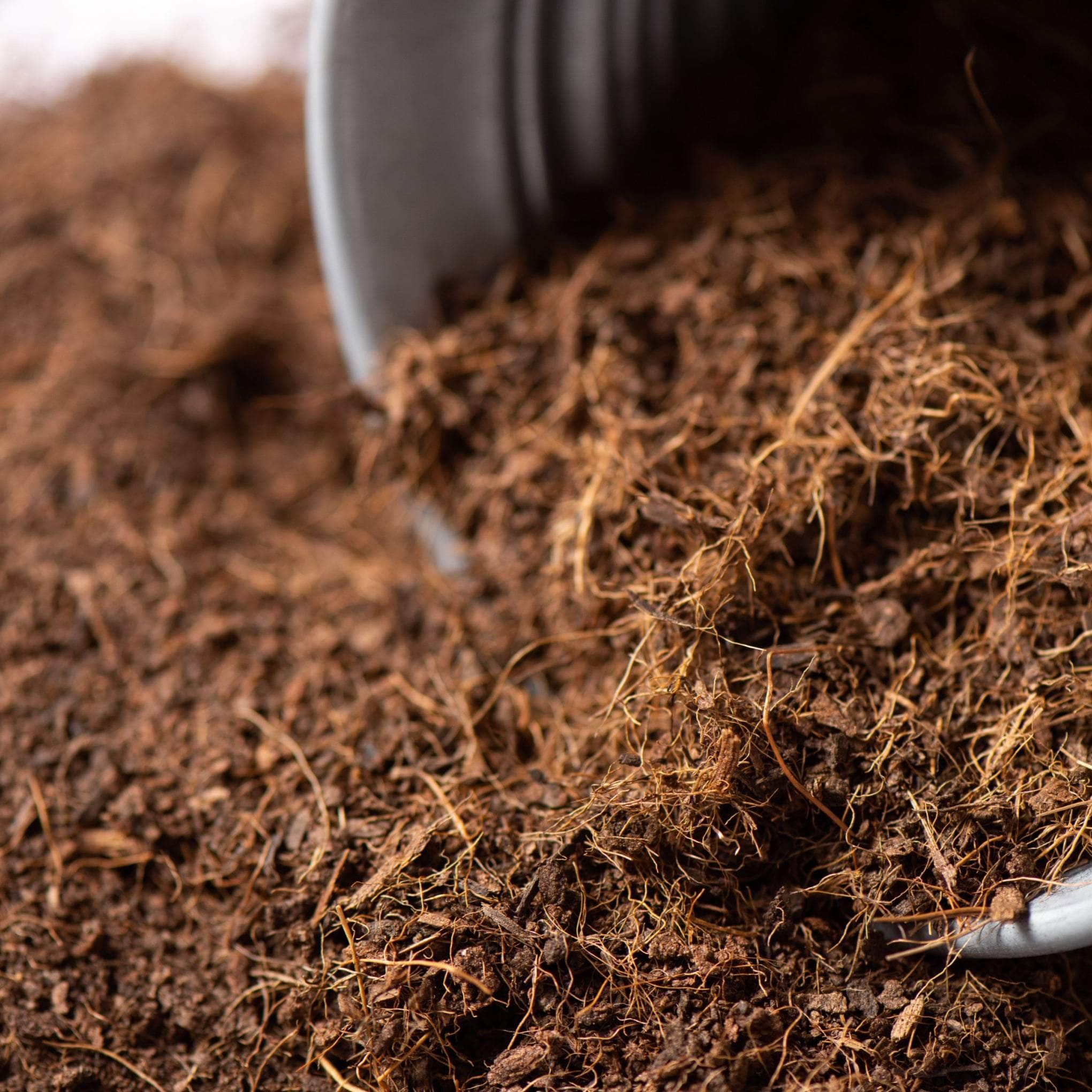The Comprehensive Guide to Growing Aubergine Plants
Welcome to our comprehensive guide on how to grow aubergine plants, your one-stop resource for everything you need to know about this versatile vegetable. Whether you're a seasoned gardener or a green-fingered novice, this guide will provide you with the knowledge and tools to cultivate aubergines successfully, from seed to harvest.
In this guide, we'll delve into the basics of aubergine plants, including their ideal growing conditions and the importance of companion planting.
We'll guide you through the process of growing aubergines from seed, choosing the right location for your plants, and provide ongoing care tips to ensure a healthy harvest. So, whether you're planning to grow aubergines in a greenhouse or in pots outdoors, our guide will help you navigate the process with ease.
Let's embark on this gardening journey together, and soon you'll be enjoying the fruits of your labour, quite literally!
Understanding the Basics of Aubergine Plants

Before we delve into the world of aubergines, it's essential to understand the basics of this intriguing plant. The aubergine is a member of the nightshade family and has become a staple in many gardens and kitchens worldwide.
Growing aubergines can be a rewarding experience, offering a unique taste and texture to a variety of dishes. However, it's not just about planting the seeds and waiting for the fruits to appear. Understanding the plant's needs, from the ideal growing conditions to the importance of companion planting, is crucial for a successful harvest. Let's explore these aspects in more detail.
What is an Aubergine Plant?
The Nebula of the botanical world, the aubergine plant is a fascinating specimen. To commence our discussion, this plant, also known as eggplant, hails from the compelling family of nightshade plants, otherwise known as the Solanaceae family. It's fascinating to observe how they have managed to thoroughly colonise our kitchens and gardens, despite their sombre connotation.
The aubergine, with its characteristic pear-shaped and glossy-purple fruit, is now a notable and indispensable entity of our organic vegetable portfolio. It's no secret that many of us relish the unique taste and texture it imparts to a variety of culinary preparations.
A point to mention, temporarily straying from the gastronomical delight aspect, is that the fruit we savour is merely a part of the entire aubergine plant. The plant in its entirety encompasses a world of fascination - flowering from bright purple blossoms and rendering verdant foliage.
Advancing from the mention of these notable features, the question of how to grow aubergine beckons us. A houseplant owner, an amateur gardener, or a seasoned horticulturalist- the allure of burrowing into the intricacies of growing this striking plant remains irresistible. This allure is what we will elucidate in the forthcoming sections.
Ideal Conditions for Growing Aubergine
Right Type of Soil: The growing conditions start from the soil. Aubergines prefer well-drained, medium-heavy, nutrient-rich soil. A perfect base for these nightshade plants to flourish.
Plenty of Water: Never let your aubergine plant go thirsty. Continuous availability of water is vital for the healthy growth of these plants.
Full Sun Exposure: Aubergines thrive under the full sun. It's crucial to pick a planting location that gets ample sunlight throughout the day.
Warm Temperatures: Growing aubergines isn't for the faint-hearted or those living in colder climes. These plants require temperatures between 20 to 25°C for germination, and a minimum of 16 to 18°C thereafter.
Adaption to Pot or Greenhouse: Aubergines can adapt well to growing in a pot, a greenhouse, or even outdoors. However, the variety you choose would depend on this decision. Some aubergines resist cooler weather, making them suitable for outdoor growth; others demand the controlled warmth of a greenhouse.
Growing aubergines is an art that goes beyond the realm of standard vegetables. Each factor from sunlight to the type of soil to even the temperature can significantly affect the growth of your aubergine plant. Strive to provide them with the best conditions possible, and you'll have a healthy, flourishing plant in return.
The Importance of Companion Planting
Companion planting represents a crucial aspect in the cultivation of aubergine plants. It serves as a natural way to enhance your plant's overall health and yield, making your aubergine plant thrive in its growing season.
Understanding the right companions for your aubergine is half the battle won. Studies have shown that vegetables like cauliflower, broccoli, cabbage, spinach, and various types of lettuce can be good companion plants for aubergines. Planting these nearby can lead to mutual growth benefits and balance within your garden ecosystem.
Conversely, it's key to avoid planting aubergines near courgettes or pumpkins. This is due to their competitiveness, which can largely affect the grow condition of your aubergine plant. Similarly, planting aubergines near peppers or tomatoes is also not advised, as they belong to the nightshade plant family and could increase the risk of disease spread.
Summarily, to plant aubergine and ensure a healthy plant, companion planting must not be overlooked in your garden planning. Remember, a strategic companion planting strategy can enhance your aubergine's growth, providing you with a bountiful and organic vegetable harvest.
How to Grow Aubergines from Seed

Growing aubergines from seed can be a rewarding experience, especially for those who enjoy the taste of this versatile vegetable. The process involves several stages, from choosing the right aubergine seed to sowing and eventually transplanting the seedlings.
In this section, we will delve into the details of each step, providing you with a comprehensive guide on how to grow aubergines from seed. Whether you're a seasoned gardener or a beginner, these tips will help you cultivate aubergines successfully in your garden or individual pots.
Choosing the Right Aubergine Seeds
Choosing the right aubergine seed, also known as eggplant seed, forms the first step in your journey to grow this vegetable from seed. Despite the numerous varieties available in the market, only a few species thrive well when cultivated from seed.
Research indicates that local varieties of aubergines tend to adapt to environmental conditions better than imported types. Hence, selecting local types can increase the potential success rate of your gardening project.
The seeds of aubergine resemble their brethren from the nightshade family and have an obsidian-black colour attributed with high nutritional content. Ideally, organic vegetable seeds outperform non-organic counterparts by a significant margin.
Steps to Sow Aubergine Seeds
Here's a step-by-step guide on how to sow aubergine seeds:
Setting Up: Accumulate a suitable growing container and fill it up with low-nutrient potting soil.
Sowing the Seeds: The aubergine seeds are to be sown about 1 – 2 cm deep. Ensure to cover them with 1 – 2 cm of substrate.
Hydration and Warmth: Water the seeds thoroughly, ensuring the water penetrates the depth of the soil but does not waterlog it. Thereafter, place the seed tray in a warm, sunlit area.
Final Touches: Cover the seed tray with cling film or a small, clear plastic hood to retain the humidity and promote germination. Germination typically begins between 7 – 21 days.
Remember that these steps are guidelines and planting processes might differ slightly based on the type of aubergine seed used. Also, carefully follow instructions on seed packets.
Transplanting Aubergine Seedlings
When it comes to the process of transplanting aubergine seedlings, caution is fundamental. The fledgling plants don't respond well to rough handling, so utmost care is needed when shifting them from the seedling tray to their individual pots or the garden bed.
The first sign that your aubergine seedlings are ready for transplanting is when the first pair of true leaves appear. This is usually noticeable after the emergence of the cotyledons, which are essentially the very first leaves sprouting from your aubergine seed.
The transplant site, whether it is an individual pot or a spot in the garden, should be adequately prepared with nutrient-rich soil. Given aubergines' preference for fertile ground, addition of organic matter like compost can create a hospitable environment for your newly transplanted plants.
The optimal location for your aubergine seedlings is under full sun, with temperatures between 16 to 18 degrees Celsius. Slowly acclimating your seedlings to outdoor conditions from mid-April onward will yield robust and well-adjusted aubergines, ready to take on the gardening world!
Choosing the Right Location for Growing Aubergines

Choosing the right location for growing aubergines is a crucial step in ensuring a healthy and bountiful harvest. Whether you're planning to grow them in a greenhouse or outdoors in pots, the location plays a significant role in the plant's growth and yield.
Aubergines thrive in warm locations with full sun exposure, making them perfect for greenhouses or sunny spots on your patio or balcony. However, the choice of location isn't just about the sun; the soil conditions, pot size, and even the variety of aubergine you choose to plant can all influence the success of your aubergine garden. Let's delve into the specifics of choosing the right location for your aubergines.
Growing Aubergines in the Greenhouse
Choosing the right location inside a greenhouse for growing aubergines can drastically impact their overall yield. If you consider the greenhouse method, be aware that these plants prefer a place that is toasty and gets direct sunlight. This warm location aids the aubergines in achieving a satisfactory yield, especially for varieties that are sensitive and require heat. Aim to create an ambient climate within your greenhouse, keeping the temperature steady is key to ensure your aubergines thrive.
While picking the spot, consider the soil as well. Aubergines prosper in well-drained, medium-heavy, nutrient-rich soil. Therefore, choosing a patch within your greenhouse having these soil characteristics will set the stage right for growing these exquisite vegetables.
Using a black mulch film is a helpful tip when cultivating aubergines in a greenhouse. It not only helps to keep the soil warm for longer but also retains moisture, providing the ideal growth conditions for your aubergines. Opting for modern cultivation techniques like this can make the process of growing aubergines in a greenhouse even more rewarding.
Planting Aubergines Outdoors in Pots
Choosing the right location to grow aubergines is crucial. When planting aubergines outdoors in pots, one of the things to remember is that these are heat-loving plants, so a warm location is ideal. If you have a south-facing wall, look no further.
The presence of heat radiation enhances the growing conditions for the plant, improving its chances of thriving. However, not just any location will do. Your choice of aubergine location must also be sheltered to protect the plant from harsh weather conditions.
When talking about pots, it's recommended to plant the aubergine in a pot with at least 10 litres of soil volume. This ensures that the plant has enough room to grow while ensuring good water drainage. Sprawling or tall-growing varieties demand even larger reservoirs, requiring 20-litre planters.
The process of deciding where to grow your aubergines is a critical one. In your pursuit for the best aubergine harvest, remember, a pot in a warm, sunny, and sheltered spot can offer an ideal home for your aubergine plant.
Planting Out Aubergines and Ongoing Care

In this section, we delve into the practical aspects of growing aubergines, from planting them out to ensuring their ongoing care. We'll guide you through the process, offering expert tips and advice to help you cultivate a successful crop. Whether you're a seasoned gardener or a beginner, this guide will equip you with the knowledge you need to grow aubergines with confidence.
We'll explore how to plant out aubergine seedlings, the importance of feeding your plants weekly, and the best practices for harvesting aubergines. We'll also discuss the use of black mulch film and climbing aids, and how these can enhance your aubergine growing experience. So, let's get started on your journey to a bountiful aubergine harvest.
How to Plant Out Aubergines
Start by choosing the right time to plant, which is the beginning of May for greenhouse planting and mid-May for outdoor planting once the Ice Saints have passed.
Opt for nutrient-rich soil for successful planting. Enhanced with mature compost or a slow-release fertiliser, it fuels your aubergines with essential nutrients promoting their growth.
Dig a sufficiently deep planting hole if planting in the garden or fill your container with nutrient-rich potting soil if planting in pots.
Carefully place the aubergine seedling into the hole or pot. Take care not to plant it lower than its previous level in the planter.
Backfill the hole or pot with soil and lightly press around the plant.
Stake the aubergine to support it and water generously.
Plant aubergine seedlings 60 to 100 cm apart, with the optimal spacing determined by the vigour of the chosen variety. In tubs, plant only one seedling per container.
When growing in raised beds, choose smaller varieties and provide support to prevent wind damage.
Lastly, for those growing from seed, sow between the end of January and the beginning of March. Use low-nutrient soil and aim for a sowing depth of 1 – 2 cm. Remember, successful planting results in healthy aubergine plants and a bountiful harvest!
Ongoing Care for Aubergine Plants
Once you've successfully planted out your aubergines, ongoing care is vital to ensure a healthy harvest. Here's a comprehensive guide:
Watering: Aubergines require consistent watering, especially in dry periods. Make this a part of your daily gardening routine.
Feeding: For a nutrient-rich soil, primarily in the initial months after planting, blend mature compost or use a slow-release fertiliser. Then, it’s crucial to feed your aubergines weekly for optimum growth.
Support: Remember, aubergine plants can grow up to 150 cm high, and their fruits may weigh over a kilogram. A climbing aid keeps them upright and provides protection from potential damage due to heavy fruits. Bamboo or hazel sticks, tied with sisal or jute twines, can be used.
Mulching: Use a black mulch film at the beginning to retain the required warmth, vital for outdoor aubergines.
Careful maintenance of aubergines, along with a suitable mixed culture, enhances the overall productivity, making your process from sowing aubergine from seed to grill eggplant, an exciting journey. Regular checks for pests are a good practice too. Monitor the soil health and keep it weed-free. With some diligence and love, your aubergines will reward you with a delightful harvest.
Harvesting and Using Aubergines
The art of harvesting aubergines brings about many considerations. It's essential to understand that the perfect time to pluck this vegetable is when it retains its glossy sheen—an indicator of ripe but not overripe produce. However, the shininess is not standard for all varieties, so it's beneficial to familiarise yourself with the specific type you're nurturing in your garden.
Aubergine, a versatile ingredient for numerous dishes such as parmigiana, curries, and fritters, fully unfolds its delightful notes when it is freshly picked and immediately used in cooking. Some assortments might require you to slice and salt them before cooking to shed any potential bitterness.
Aubergines are akin to tomatoes in terms of their girth and height, occasionally achieving nearly 150cm in growth. Given this stature, when they begin to bear fruit, a climbing aid or support becomes necessary. It would prevent any undue tearing or bending due to the weight of the fruits or wind-induced accidents.
As the growing season progresses, you will need to prepare your weekly routine to manage plant care, which might consist of feeding your aubergines. Use a nutrient-rich vegetable compost for an abundant harvest. For outdoor planting, utilise black mulch film, a great solution for retaining heat.
Final Thoughts on Growing Aubergines

Growing aubergines, whether in a pot or in the greenhouse, can be a rewarding experience. With the right location, full sun, and the right grow conditions, you can cultivate a healthy aubergine plant from seed. Remember, the grow season depends on the variety, and some may need darkness to germinate.
The joy of harvesting aubergines, whether for a gardeners world magazine feature or simply to cook in your garden, is unparalleled. The process, from sowing aubergine seeds in a heated propagator to transplanting them into individual pots filled with multipurpose compost, is a journey worth undertaking. In conclusion, growing aubergines is not just about producing organic vegetables.
It's about the experience, the learning, and the satisfaction of nurturing a plant from seed to harvest. So, why not give it a try?
You might just find a new passion in your gardening world.




